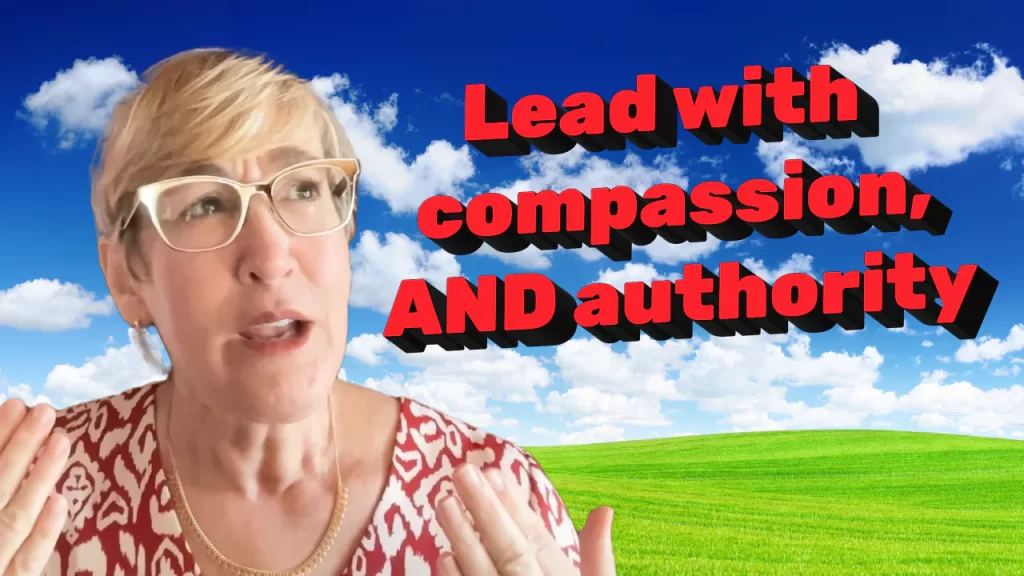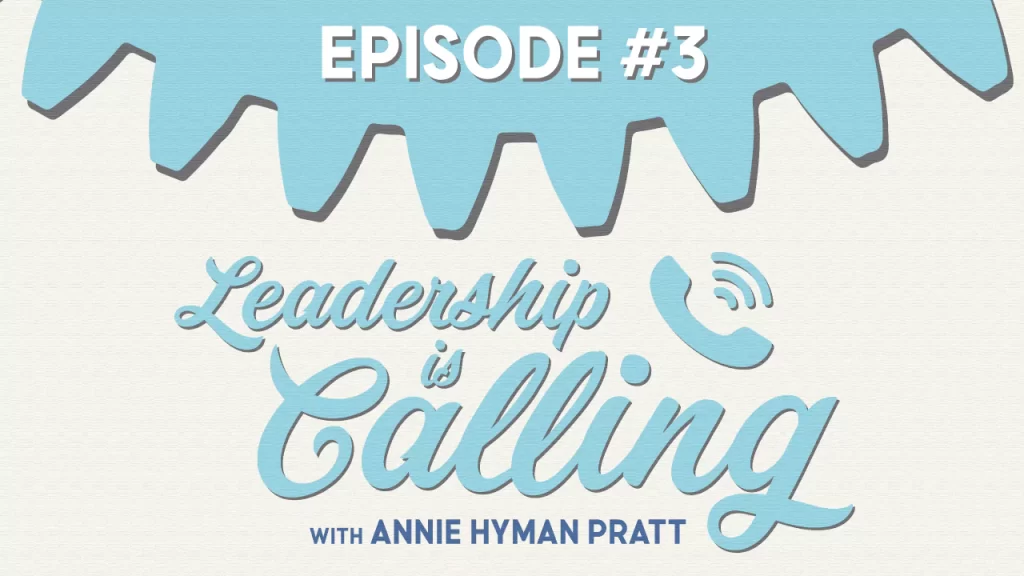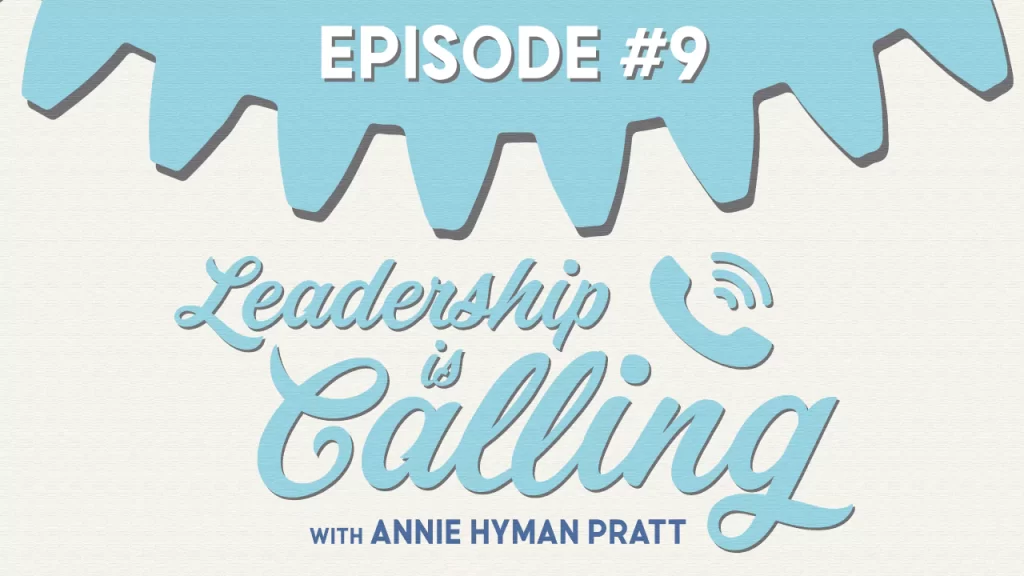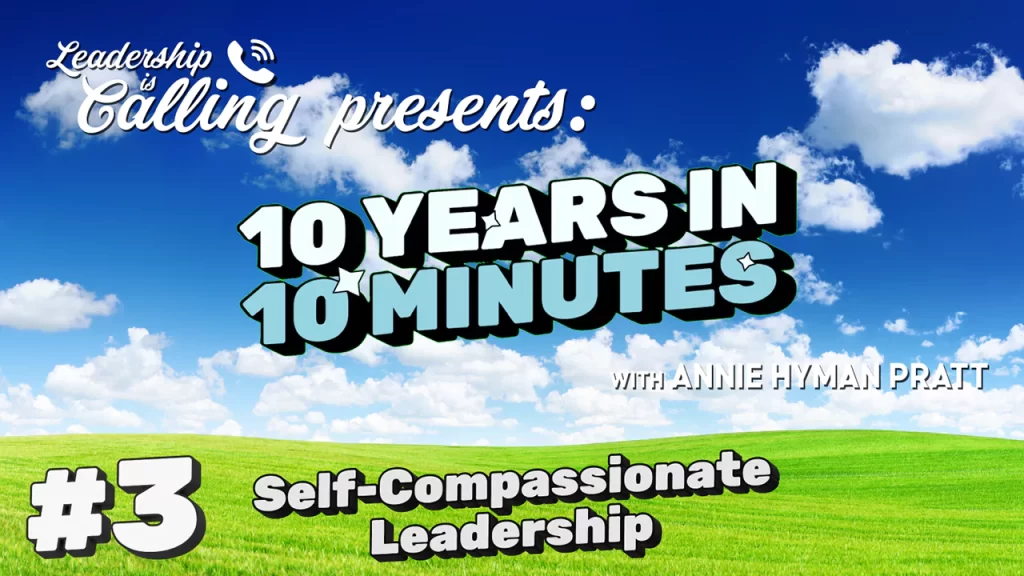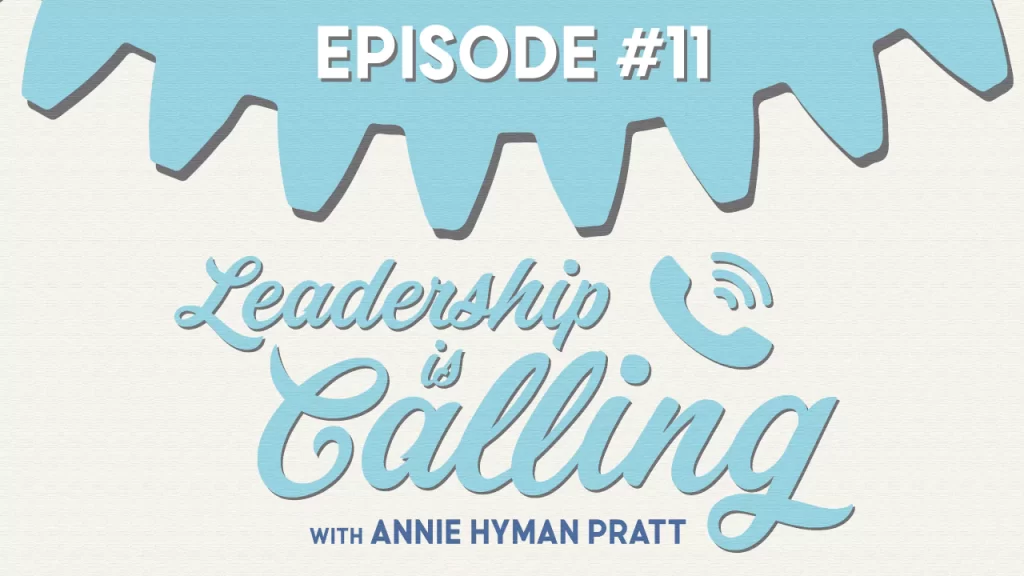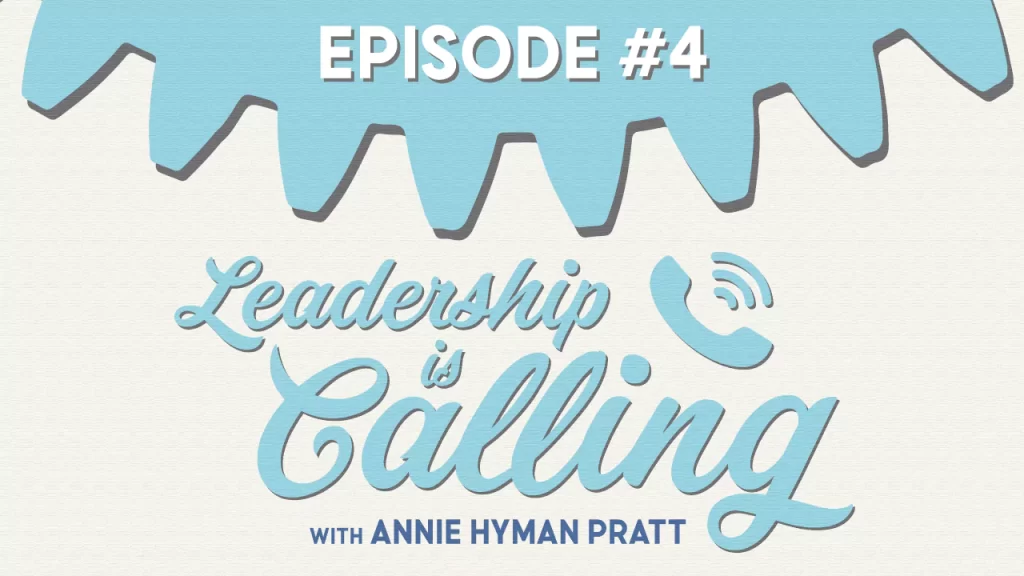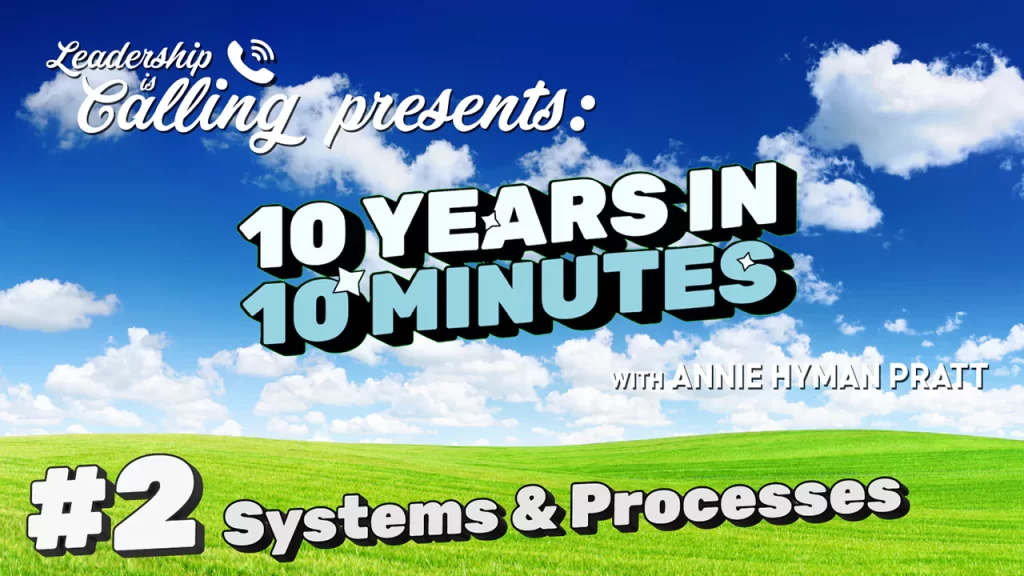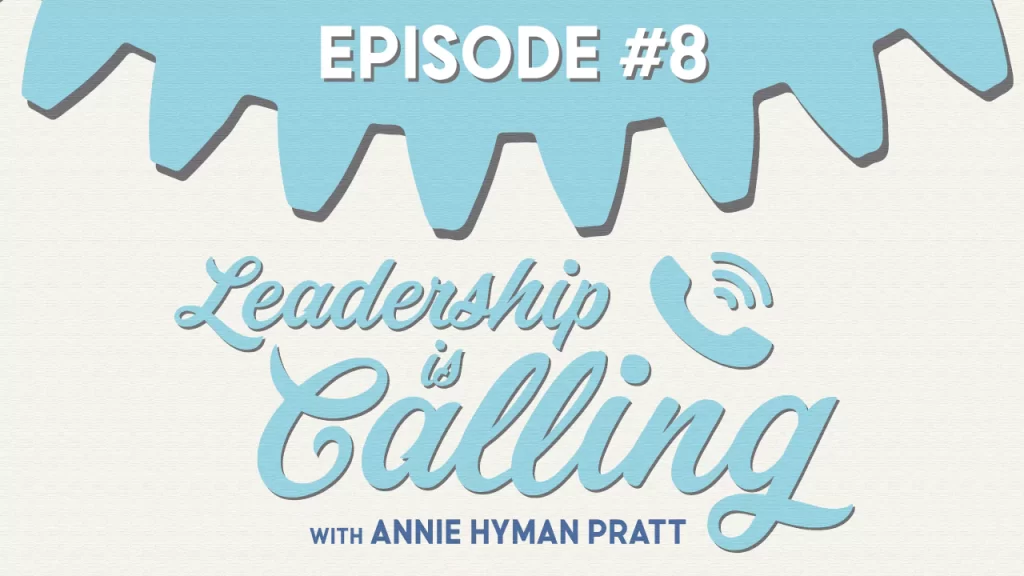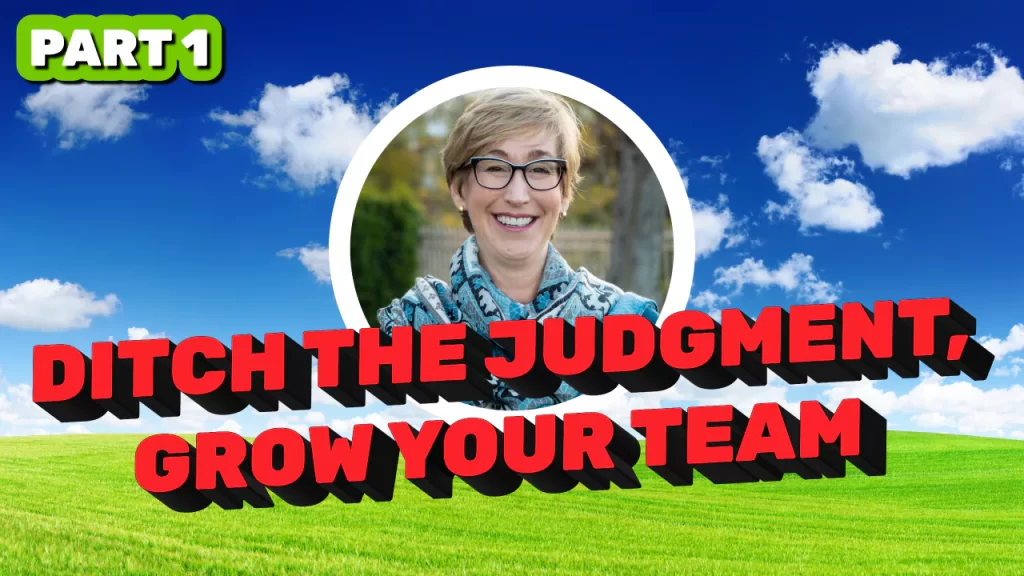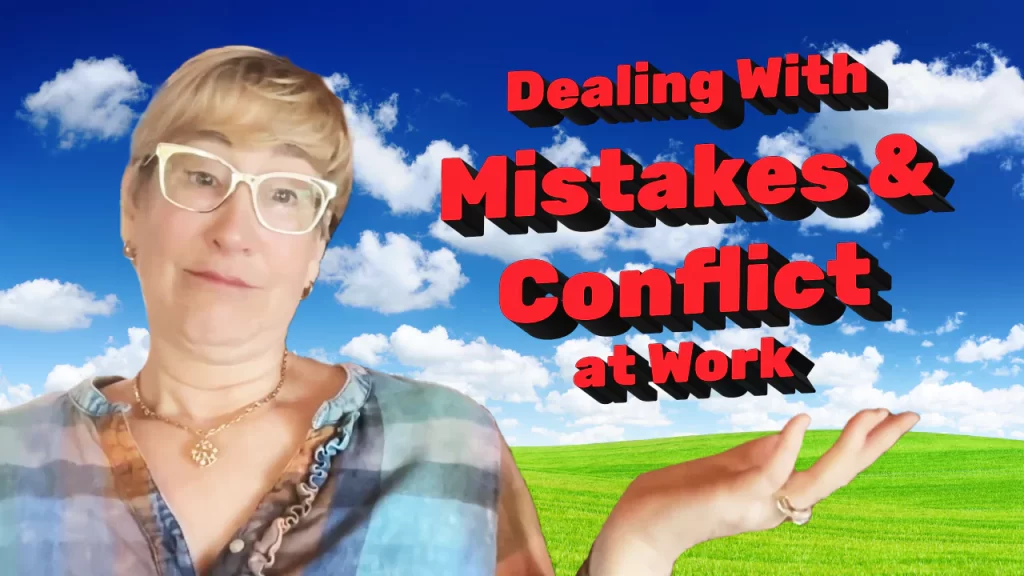Episode #30: The SOAR Acronym: A Proven Formula for Success in Business
Leadership is Calling Episode #30
Annie Hyman Pratt and Heather McGonigal
- Description
- Transcript
The SOAR Acronym: A Proven Formula for Success in Business
Are you an entrepreneur who is struggling to grow your team? Do you feel like you’re the only one who can get things done? If so, you’re not alone. Many entrepreneurs find it difficult to let go of control and trust their team members to take on more responsibility.
In this video, I’ll share with you the secrets to transitioning from authority and control to influence and collaboration in your business. I’ll explain why it’s important to let go of control, and I’ll give you tips on how to build a team of high-performers who can think for themselves using our SOAR acronym.
If you’re ready to take your business to the next level, then this video is for you. Watch it today and learn how to transition from authority and control to influence and collaboration.
Key Points:
- Secure relationships and agreements are essential for high-performing teams.
- Trust is the foundation of secure relationships.
- Teams need to be able to renegotiate agreements as needed.
- CEOs play a critical role in creating a culture of trust and collaboration.
Related Resources:
Self-Leadership Journals: Ahead of the Curve & Ace in the Hole
More information: Self-Leadership
Articles: Relationship Repair: The Key to a High-Performing Team | A Better Way to Lead

Auto-Generated Transcript – unedited version
The SOAR Acronym: A Proven Formula for Success in Business
Annie: It’s such an interesting time, actually. There are a lot of businesses right now that are struggling, experiencing a downturn. And for the first time in their business life, you know, and for many of them, they’ve been in business for a decade. And this is the first time that they have had some real, you know, some real unexpected headwinds. I’m noticing that, of course, the stress can bring out some pretty challenging behaviors from a bunch of entrepreneurs. Especially the ones that are pretty used to being successful.
This time is definitely an opportunity. But I’m also just seeing that to seize an opportunity, to really have a new future, a better future, to get through a time like this, a challenge like this, you really do need to partner with other people and team up.
These kinds of challenges nobody can get through all by themselves. People need a thinking partner, partners. People need support in really understanding what’s going on. Lots of people need outside advice. They got to really kind of look around and see what’s changing and why. Nobody’s an expert in everything. They really need to understand what’s happening in their business from their team more than ever.
Because, you know, an entrepreneur can’t be everywhere at once.
Heather: And I think what’s interesting about this time or what’s sort of standing out to me is that I’m seeing more and more that entrepreneurs go through the first part of their business building as long as they can using authority and control. And that’s not—I don’t mean that as a bad thing.
Annie: Entrepreneurs start, you know, they are—how do I say—entrepreneurs are like the original supermen and women, super women because they really can overcome almost anything, right? They see a problem or an opportunity. They jump in, they do a bunch of stuff. They are really good at directing people, at making things happen, at, you know, doing things themselves.
That is like—you have to have that skill as an entrepreneur. Otherwise it’s very, you know, it’d be impossible to start what they’ve actually started and got and gotten going. So entrepreneurs know that they can trust themselves. I think of it as the—they really know they can trust themselves because they’ve done so much already and they haven’t died.
And, and, and as we go along in their businesses and they grow and they want to have more impact, they have to have a team. It’s like I don’t—I think it’s never even really all that conscious of a choice for entrepreneurs. It’s just like I want a bigger impact. Therefore I have to have a team. And that is true.
Want a bigger business? A bigger impact? I want to do new things. I want to do the strategic parts of my business and to do all that, you have to have a good team.
Heather: So the thing about working with and through a team is that it only can go so far under the authority and control model.
Annie: You can think of a team—teams—in kind of two ways: teams that don’t do any thinking, that don’t have very much of a voice and they’re getting all the direction and decisions and, you know, plans and whatnot from the higher ups because that’s, you know, it’s sort of a one-way authority and control down or you have the opposite kind of structure where you have a lot of information, a lot of voice input, etc., traveling up.
So to have the second kind of team where you actually have people on your team that can think, that can take full responsibility for stuff, that can bring a CEO or an entrepreneur new ideas, that can do some real problem solving, not, you know, not just be an extra pair of hands—that requires this enormous shift, enormous shift from working through authority and control to influence and collaboration.
That means that I have to trust that I can guide, mentor or inspire, set the goals, create good relationships, etc., that the people on my team can be effective, can be the best of themselves. That it’s no longer about me being the smartest, best controlling person, that it’s now about the team, the team taking that part up.
So between this authority and control and kind of influence and collaboration, there is a, from my point of view, a giant invisible wall. It’s like an invisible brick wall, like a, you know, like a forcefield, like the kind you see in the movies where people, like, are running up to it is like, well, and, and the entrepreneurs are on, on the control side of it going like, But I need that team. I need a team that can think. I need a team that can actually take over real responsibilities. I need a team that can innovate stuff on their own. I need a team that really is good at solving problems and that lets me be able to do the strategic and the big picture thinking. You know, I want my business to operate that way. I want that team. They can see through the wall. But what they don’t get is that there is this enormous transition that involves a lot of skills that they don’t naturally have. They don’t naturally have them. And in fact, most humans don’t naturally have them. We have to learn them because going from authority and control to influence and collaboration requires a whole different way of leading and being in your company.
Heather: Annie, if I could ask a question about…
Annie: Yeah. Yes. Right. Yeah. Yes, yes, yes, definitely. Oh, my gosh. It’s so true. Yeah. Because when you’re an entrepreneur and you do things that turn out well, like you know that you’re responsible for you get so many positive rewards. Right. And not just financially. You get a great reputation and you get to really help people in a big way, depending on, you know, on the kind of business that you have, you know, you get to often transform lives at least to your clients lives for the day at least. So all of that stuff is amazing. It is very positively reinforcing for, well, if I just keep being the smartest, best one here, if I just keep doing this better and better, I’ll just be more successful. And by the way, every time I try to teach somebody, there’s nowhere near as good as me. They’re just like, not even close.
And it even feels bad. It’s like, you know, if I have my team do something and work with the customer, it doesn’t go all that well. It’s like, I’m even embarrassed about that. Like, that’s, it’s, it’s risky. It’s like entrepreneurs as they build their business and it gets bigger and stronger and more reputable. It’s like they have something to lose by stepping back and they really feel that. They really feel that the the thing is, is like they’re at that moment, what they don’t realize, though, is that they are up against a wall. so even though it’s going to be risky, they can’t grow anymore. They can’t get better.
And in fact, they’re going to be getting worse, if they can’t grow and they can’t develop their team, even the decent team that they have is going to start leaving because they want to get better. They want to contribute more. so it is fascinating that at that moment it really is kind of like, you know, this invisible brick wall of fear, because they have to take one of the biggest risks in their professional, you know, business career that they’ve ever taken to actually develop a team that could do so much more than they could do themselves. And that does require being willing to have all kinds of stuff, not go well in the you know, in the in-between stage, in the getting through it stage, you literally have to be willing to endure that pain.
Heather: Yes, that’s. Yeah, yes, yes. Yeah. Yeah. The V state is that they get a whole new future that is not available to them now. They actually get a business that can operate without them. They get a business that might grow and become great at things that aren’t even there in how would I say, you know, aren’t there US expertise that they have so much more brain power, commitment, dedication. It’s like you know they’re like Verizon. I don’t know if anybody even sees commercials anymore but those are just Verizon commercials right where there’s a whole team behind the guy. Right? Not just the rising sun. It’s the whole neighborhood. Yeah. It’s like you get that when you’re on the other side, you get a chance to have a much bigger, better future. And without making this shift, you can’t get there. You can’t because the people that you need to be with you on that journey won’t stay. it’s almost as simple as that. and if they didn’t stay, you won’t be developing them, so they won’t get better anyways. And then when they are, they really do want to leave because they’re…
Annie: Yes, yes, yes. Yes, yes. Absolutely. Yes It’s absolutely yes, absolutely. It’s Yeah. Oh yes, Yes there is. Absolutely. Yes there is. It’s oh my gosh. You know, we could look at sports or performing arts or whatever. There is not only solo violinists, there’s orchestras. And by the way, you can’t have an orchestra with one person, right?
Like there are so many things that can’t that, you know, that need a team and that even to just be successful at all not everyone is built to take kind of a, you know, that sort of needs a ton of confidence.
You know, it’s like my, my, my husband, who’s an entrepreneur’s entrepreneur who has ridden the waves of up and down, you know, he’s like, you have to be willing to kind of jump off a diving board and not look to see if there’s water yet. Like and that’s not me, by the way.
So I’m you know, I’m an entrepreneur, but I’m not one of those entrepreneurs. And that’s okay. and I, I love working with team. I actually have been part of many teams. I haven’t only been a CEO or, you know, only at the at the tippy top. I, I totally love working with teams and you know to think about well are there great people out there well that are willing to work on a team and not be the star it’s like yeah have you been to a ballet video? Have you you know, have you been to any kind of performing art? Like, you know, I guess there’s, you know, one person shows here and there, but most of the things that we enjoy have a whole cast, a whole giant team to to produce something to make something happen. Okay.
Heather: When you do. Yes. Yep. That’s. Yes, yes. And the team is the most important part. It’s like that. You know, it’s incredibly important, you know, I mean, you can have the best and you know, you can if you’re an orchestra director, you can have the best instruments in the world. But if your players can’t really play them all that well, that’s not, you know, not not going to be good. So some people might say, well, there’s no such thing as safety, which is true because, you know, any company can go out of business. There’s not you know, it’s not like you you definitely for sure 100% will get a paycheck tomorrow. You just don’t you could hit, but I could get hit by a bus.
Annie: Yeah, absolutely. Yeah there’s yeah. Okay. Having said that though there you know we are all built for our own level of risk taking kind of like immediate risk taking. And it does have to do with how safe we feel if we fail. It’s kind of like, you know, one of the other things that my husband says is the reason he can take such big risks is because at the end of the day, he’d be fine to live in a van by the river, right? Like, you know, that that is really okay with him. So he can bet at all, you know? And I’m like, not me, right? I’m not going to live in a van by the river. You know, I need my closet. I need a nice, warm, you know, big cell or I, I oh, and and so, we all have kind of a, a, a base layer of what we need, what we what we psychologically know we need to rely on. It’s kind of like Maslow’s hierarchy of needs, right? But each of us are a little different. David literally just needs a van roof over his head, and I need a lot more than that. And it’s not until I feel reasonably secure in that part that I’m able to free up my mind to focus on something else entirely, and that is the spot that team members are in. Right? They, they, they’re in a spot where they’re like, okay, I know that part is covered plenty well enough now I can really give my attention, my focus, not have this anxiety running in the background. You know, David never is thinking, well, if I take this big risk, I might actually wind up in that van. But I do, right? So, you know, I’m not a giant risk taker because, you know, because I really don’t want to live in that van.
So, I don’t know, we’re all a bit different. And what we’re going for is a you know, that we get a team that has enough resilience, has their lives in a place with kind of enough security that they really can contribute and dedicate their thinking and their energy to what we’re doing.
Heather: Yeah. Yeah. We want that. And by the way, I’ll just say kind of one last thing on this is one of the things that team members need to free from their minds is having to make the CEO okay.
Because if I have a very emotionally reactive boss, you know, CEO, entrepreneur, and I am, you know, spending my day trying to figure out how do I not upset this person, How do I you know, make sure that they’re not going to, you know, yell at me or criticize me in front of the whole team or be upset with me. How do I protect the rest of my team, maybe from the CEO being upset at them when I’m spending my time thinking about that? That is an enormous focus and energy drain. Enormous. And that means I have so little left to actually work on the outcomes.
So it really is that that CEOs that entrepreneurs that sometimes when they’re being really reactive, that they don’t understand how big the impact is that that the team on the other side of that wall is one that is can trust that the CEO is okay no matter what happens in the business, no matter the mistake, no matter if the thing turned out great or didn’t turn out right. Because if they can’t trust that they have to spend way too much time and energy and focus mindshare on trying to make their CEO okay.
And I could see a lot of conditions that would lead to, like if I was concerned about that as a team member, then I might be making different suggestions
Annie: Absolutely. Yeah. Yes. I probably won’t challenge their ideas. I probably won’t ask them to. You know, let’s lay this out and talk about the details. I might say yes when I really mean no. Or maybe, you know, thinking, well, just, you know, take the pressure off right now because this person can’t handle me saying no. So, you know, there’s there’s there’s so much in that that is it’s it’s tragic. It’s a tragic waste of resources and CEOs don’t even know it’s happening because they’re in emotional reactivity. They’re stuck in their own tiny world at that moment. They just can’t see it.
Heather: This is probably, you know, a great time to talk about, well, what you know, what do you need to make that transition from authority and control to influence and collaboration? Like what do you need? What has to happen? What are those skills that most entrepreneurs don’t have? And by the way, the skills that did not get them here really are authority and control and how amazing and outstanding they are as individuals that got them here. But now we need them to work through inflow and collaboration so that other people can be outstanding and amazing and get them to the next spot.
Annie: So we have an acronym for that and we call it SOAR
So the S stands for self Leadership and I can’t overstate it. It’s important. Self leadership is all about not being driven that your behavior, your thoughts and your behaviors are not driven by your emotions. So self leadership means that I can have emotions, but I can take independent action. I can think just fine and take the actions and be and you know, and think the thoughts that I want to think without being in emotional reactivity, right. That I’m not emotionally reactive.
And emotional reactivity is when you’re thinking or behaving in ways that come from self-protection. And I would say that it’s like, you know, we would think of it as our kind of fight, flight, freeze, please use all of those kinds of reactions that are hardwired, self-protective reactivity is hardwired. It is. It takes almost no energy like we have this amygdala. It sits on top right on top of our brainstem. It gets it’s like you know, all of our senses bring in information. It gets on this superhighway to the amygdala. And the amygdala makes a call without us thinking at all of is this a threat or not? And it is hyper effective that it sees threats where there are none. It sees, you know, potential threats that in today’s day and age are not threats at all?
I think that we were designed for a time where most threats were physical. Now we’re in a time where threats are psychological. So when you might be in a meeting and your boss rolls their eyes while you’re talking, that your amygdala is going to tell, you know, kind of puts you into reactivity right away or like, that’s a threat. It’s like, did my boss just disrespect me? Do they think badly of me? Do they think I just gave a bad idea or are they going to take me off this project? Are they going to fire me and my, you know, my not in a good place here. So all of that kind of reactivity, things like blame when we’re in a place of blame, judgment, criticism, fear, anxiety, hiding, overwhelm, resisting defensiveness, all of that, all of that is self-protective thoughts and behaviors self-protective.
Okay, when we’re in self-protection, we cannot. I think we literally are not driving our behavior. Our behavior, our amygdala is driving us. We are just reacting based on our emotions. And so we need to learn how to master our regulating our emotions, how to get ourselves from self-protection back into self leadership. So that we can interact with people in positive thinking, you know, effective ways.
We have to have this. And it’s it’s the kind of thing of that I wish we taught even more in preschool, you know, and all throughout school, actually, because, you know, we do we teach a little bit of kind of self-restraint of, you know, you don’t hit people and, you know, and try to treat others as you want them to treat you. I know we do that, but we don’t teach people how to handle emotions. And it’s hard. It’s hard and we can’t turn them off. It’s not possible.
So we need to get ourselves to a place where we can handle difficult emotions. We know what to do with them. They are not, you know, having they are not driving our behavior. And if we have a team that doesn’t drive our behavior to do things like, say, you know, that was the worst mistake I’ve ever seen. Or, you know, from now on you have to bring all that stuff to me because that was the dumbest mistake ever. You know, like, we need to be the kind of leaders that can think before we speak and and really interact in a way that gives our team members the best chance of succeeding from here. And that is never going to be blame, judgment, criticism, defensiveness, etc.. It’s never going to be that. So we need to get this part down first. That’s the first thing.
The second piece of SOAR is the O, it stands for outcome focus. If you’ve ever seen me speak, you’ll know I’m constantly talking about outcomes. What’s the outcome? And the thing about business is that we come together to achieve outcomes. That’s like the point of business. And so when we’re working together as a team, that outcome focus is our destination, that, you know, those outcomes are what we’re all going for together. It is the thing that we have in common. We all may be, you know, extremely different from each other and, you know, in every part of life except this, that we’re both going for these business outcomes. And to keep that in mind and keep realigning to that, to do our thinking based on knowing what we’re going for is game changing. And when we don’t have that, it’s almost impossible to stay out of conflict problems, power struggles, etc. because then we’re focused on us as individuals being successful against each other instead of being with each other to achieve, you know, the bigger, the bigger goal.
So then the third part of the acronym, the H stands for agreements. And this is where I think that when I think of influence, I immediately think of agreements because when you’re in a kind of a command control and authority model, you’re making demands, you’re giving, you know, strong directions. You’re telling what they’re going to do, okay, in agreements, we work it out together. We know we have a goal and we’re going to negotiate and really figure out what is the best thing for me to do to help contribute to this goal. What’s the best thing for you to do?
And if something changes, we’re going to renegotiate, because the whole point of agreements is that each of us can optimize for what we have going on. Each of us can be a thinking node in our business of like, Hey, you know what? I’m you know, I’m a resource and I’m using some resources. And I really think that if I did it this way, that would be better for all of us. And then the CEO doesn’t have to think of that. It’s game changing and we need people to be able to make agreements they’re confident they can keep, because if they’re getting a bunch of demands, that’s it’s it’s that puts them in a place of well, you know if I don’t have a say in how this is going to happen, I’m going to disappoint you and I won’t have any any ability to not do that. It’s like we need to work together through agreements. It’s game changing, just game changing.
And then the last of the saw acronym is the R, and it stands for Relationships. And relationships and business are fascinating to me because what we’re going for in these relationships is that they’re secure. So what I mean by that is not that, you know, that an entrepreneur or a team member are each other’s best friends and that they know everything about their kids and their families. Although it’s fine if they do, it’s fine. Totally fine. But what we’re really going for is that on the team that we all trust each other to have each other’s backs, that we trust that my teammates, when they make decisions, when they go to take actions, that they won’t do so without thinking about how it impacts me, that they won’t do things only in their self-interest. That hurts my ability to contribute to the outcome, to do the parts that I’ve agreed to do. And with that, why we need them to be secure is because it’s the same reason that I was talking about earlier with CEOs that can be emotionally reactive, where the team is trying to make sure they’re okay. If I don’t trust that my team members have my back, I have to spend so much time trying to figure out what they are doing. And it is, is it going to harm me? And the more time I have to spend on that, the less time I have to actually work on my projects and tasks and do the strategic thinking needed to achieve outcomes. So we need these relationships to be very secure.
Heather: You know, another way of saying that is high trust, but the trust is that I can trust that this other person will look out for me. That’s the trust. I can trust their behavior. I can trust that they will keep my interests in mind.
Annie: And it is oh, my gosh, it’s the foundation of working together. Because, again, if you don’t have that, then, you know, I’m sure everybody here has been on a team where, you know, you can see people are competing hard core with each other and they’re you know, they’re they are completely self-interested. And, you know, and some people are winners and some people are losers in those businesses. And that is not good for the business. We want everybody to be working together. Everybody’s a winner because we’re going to achieve the outcomes together. So this is so important and this is the way through that invisible brick wall. This is the way that you move from authority and control to, you know, influence and collaboration to actually working in a team where they are extra and they get to do extraordinary things, not just you, not just you. So yeah, so that’s how this works. It. Thanks, Yeah.


